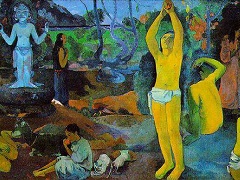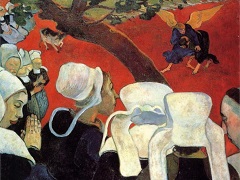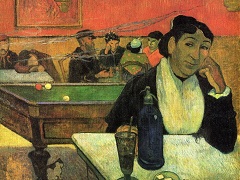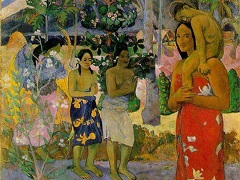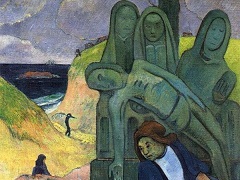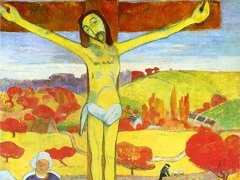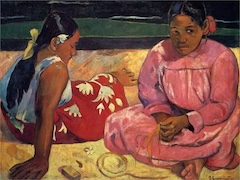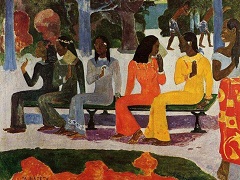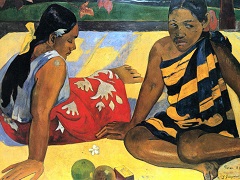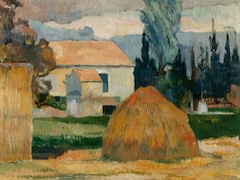Siesta, 1893 by Paul Gauguin

Women resting on a roofed-over veranda and the shaded grass during the heat of the day. One of them is ironing while the others are doing nothing.
They are all native women, but their clothing is European, loose-fitting mission dresses or colorfully prinred fabrics, as if in a colonial fashion magazine; the foreground figure, so inimitably casual in pose, seems particularly reminiscent of such magazines.
Though undated, the picture was probably painted in 1891-92, when Gauguin was taking an active interest in his everyday surroundings. Pierre Bonnard's art took up scenes of this type after 1910. The spatial composition of this painting, using the posts and the perspective-drawn veranda boards, is especially clearly defined.
Gauguin continued to push the boundaries of art throughout his life, contributing to the Symbolist movement and experimenting with color in unique ways that distinguished him from fellow artists.

